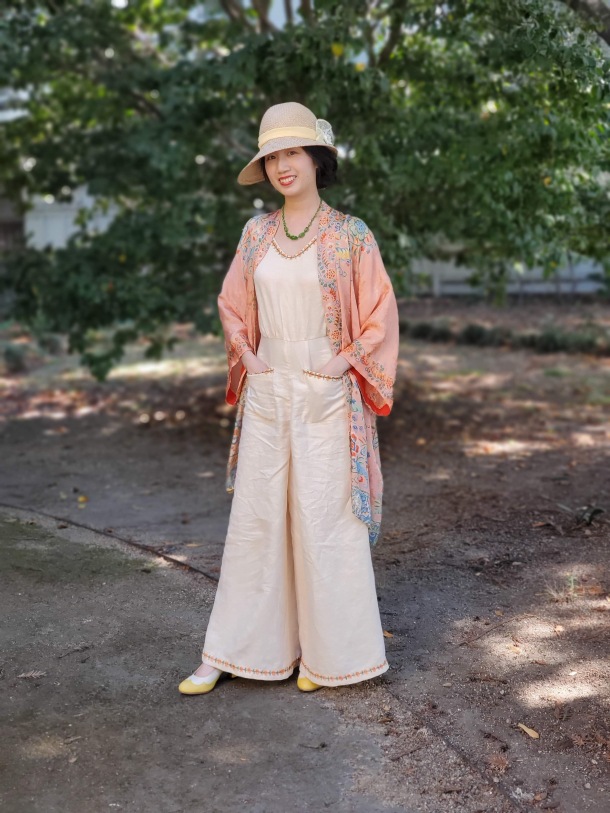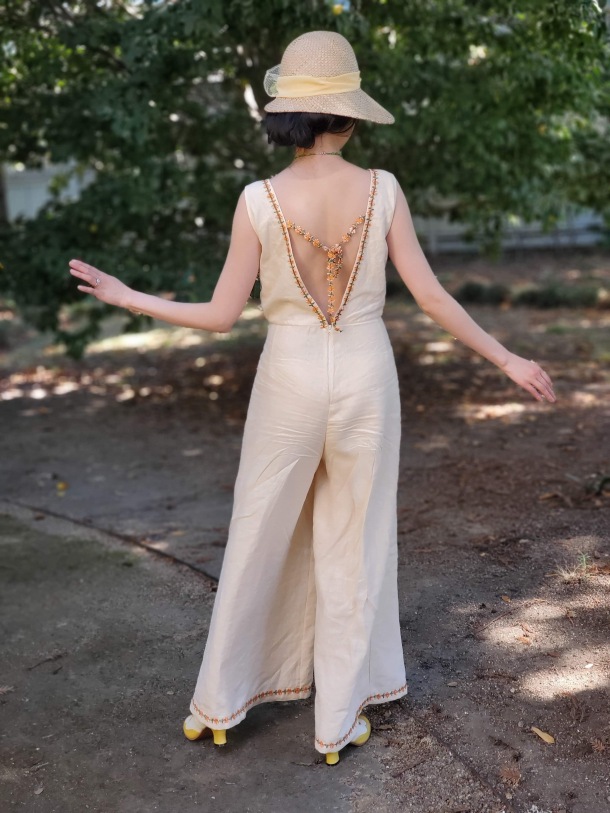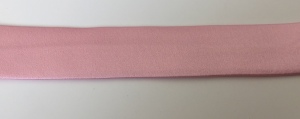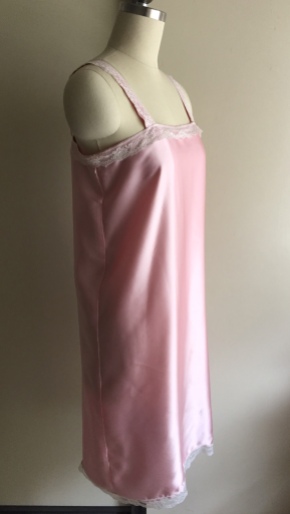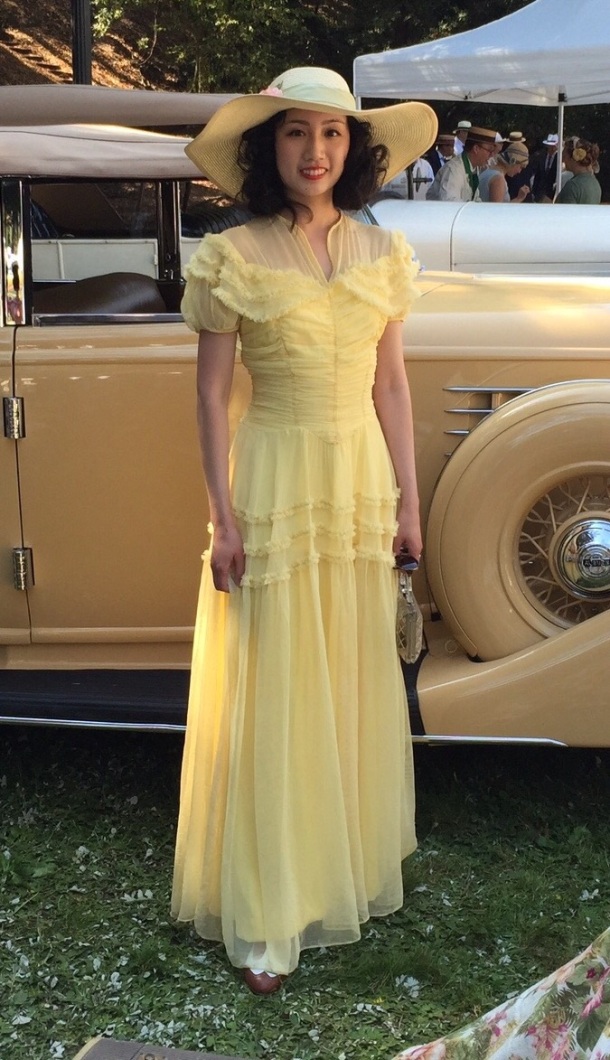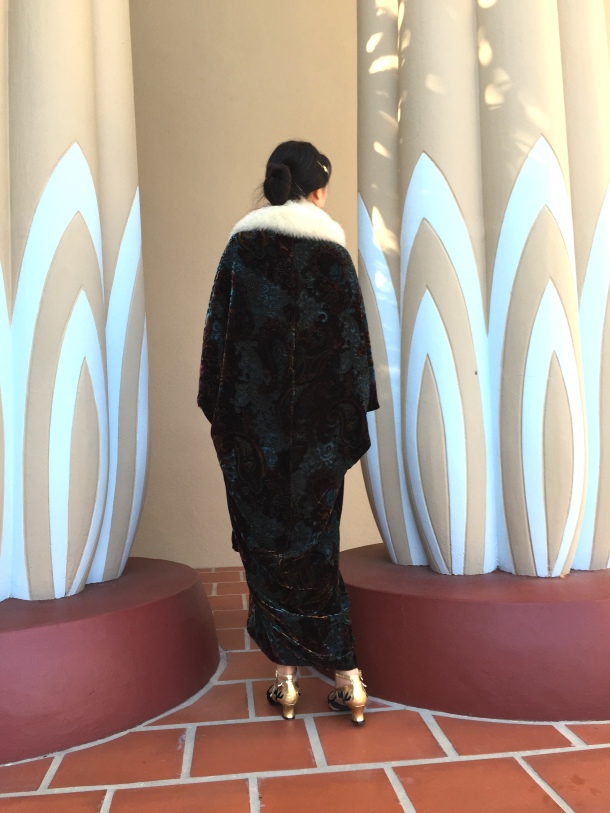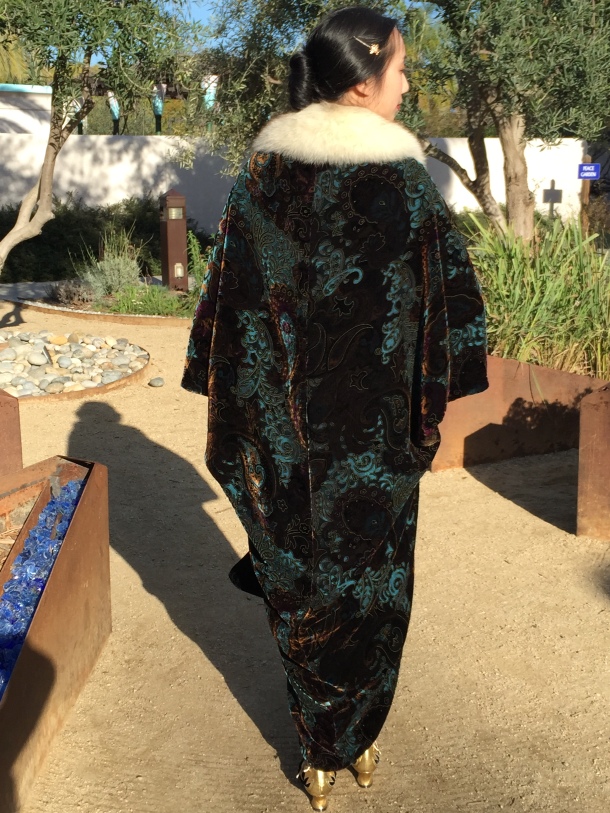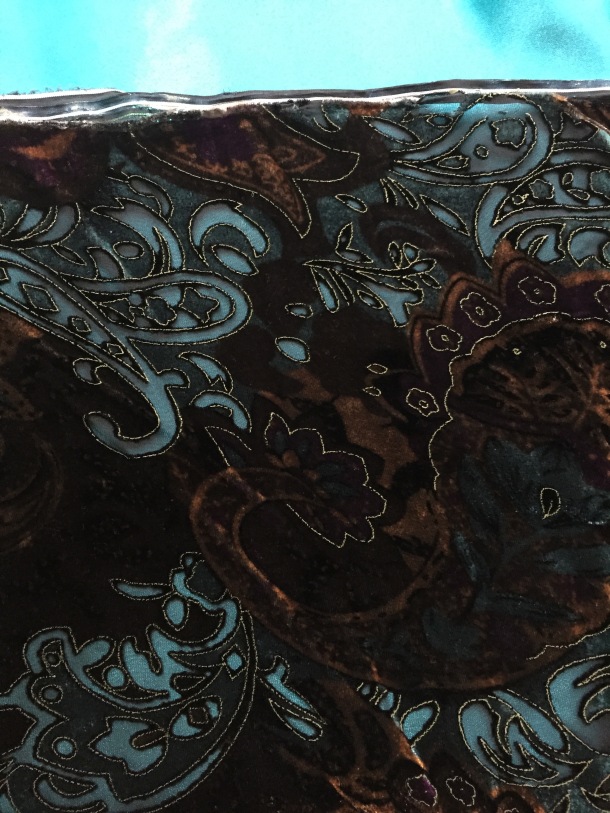Back in April we had some chilly weather so I made myself a soft cozy cardigan using a 1920s pattern from Wearing History.
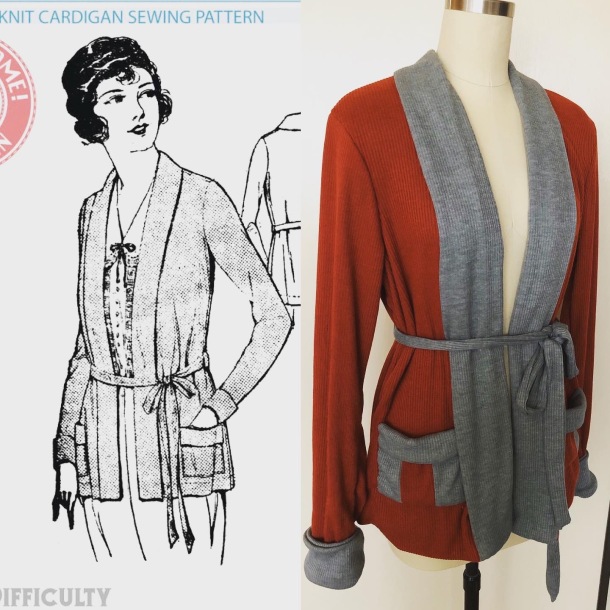
I had some gray and pumpkin-colored knit fabrics in my stash so when I saw that pattern I thought it was the perfect way to use up some fabric. This was a sewing pattern, no knitting knowledge required! Plus it has pockets! (I decided to color block my pockets. That is not in the pattern; if you like to keep things simple you may find it easier to make solid pockets as instructed).
Because this is a pattern using stretch knit fabric I recommend that you have a serger. If you are very determined to make it you could probably zig-zag everything tightly. This pattern is meant for knit fabrics; I don’t know how it would look with woven fabrics.
This is a reproduction of an antique pattern from the 1920s so it came in only one size (42″ bust). This was not my size so I had to grade down from the pattern to make it fit me. I also found the sleeves too baggy on me so I also had to slim them down. The pattern does not have a lot of pieces (back, fronts, collar, sleeves, pockets, waist tie) so if you have knowledge of grading you can manage it just fine. I am 5’6″ and did not have to adjust the overall length. 
Depending on the width of your knit fabric and your size you’ll need about 2-3 yards to make this cardigan. (Please see the size chart on the pattern listing). The knits I was using were very thin and fine so I had to self-line and double my yardage. I used 2 yards of the pumpkin fabric, all lined with gray fabric. My collar, cuffs, ties, and pockets all used some gray as well. I had scraps left over from both colors; I would estimate I used almost all of the 2 yards of pumpkin and about 3 yards of gray. (If you are using a thicker knit you won’t need to line so your yardage would be half of what I used).
This pattern is listed as “expert difficulty.” My personal opinion is that the construction is not very difficult but the reason why this is not a beginner pattern is because it comes in one size (42″ bust) so you will have to know how to grade patterns if it is not your size. (Luckily it is an open front cardigan so it can run big and has room for error!) The other reasons why Wearing History lists her “Archive Couture” patterns as advanced or expert is because some of her patterns (plus the instructions) are reproductions from antique patterns, which assumed a certain level of sewing knowledge and did not do illustrated step-by-step instructions like modern patterns.
PROJECT COSTS:
- Pattern from Wearing History: $5 from her Etsy; it is on sale for now
- 5 yards of rayon/poly/lycra rib knit: $26 plus $5 shipping from Fabric Mart.
- Thread:~ $2
Total: ~$38
If you are looking for something comfortable to wear around the house I highly recommend this pattern! I’ve already been looking at my stash and thinking I can make another one for wearing at the office or with dresses.
Note: You may have noticed that my cardigan is used as an example on the Wearing History Etsy listing. The photos are used with my permission. I paid for the pattern myself, and was not paid to make this blog post. 
